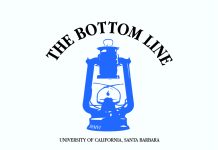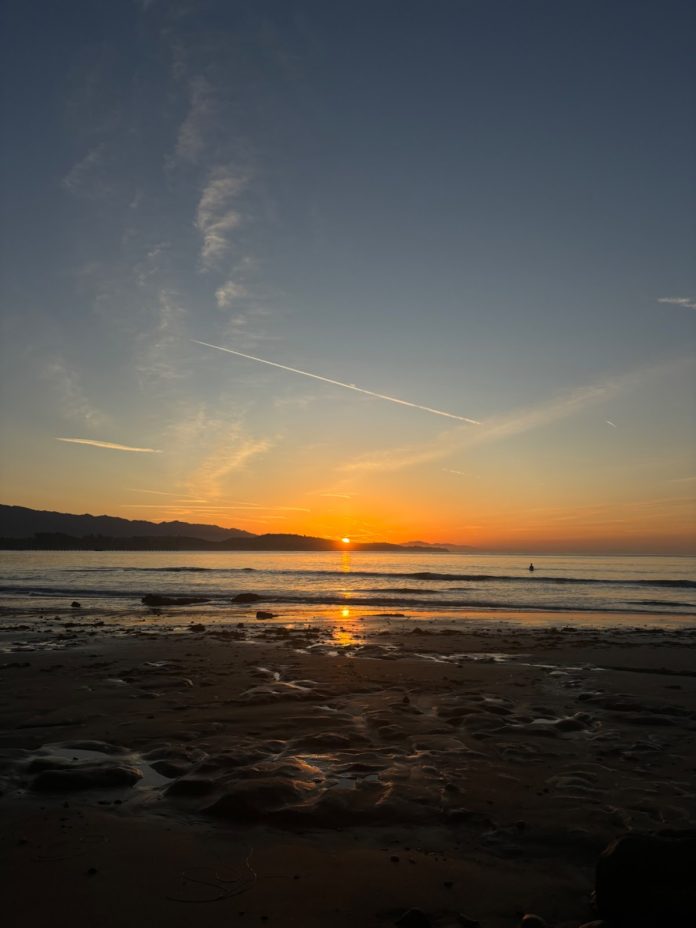Sophia Alvarado
Contributing Writer
Why UCSB beaches are appealing
UC Santa Barbara (UCSB) is well known for its research initiatives, its campus social culture, and its Nobel Prize-winning faculty. In addition to these elements, UCSB’s location is what it is mostly recognized for, since many students and staff say that being right on the beach and surrounded by the ocean is what draws so many people to this school. Students and families visit UCSB’s beaches every day to go on sunset walks, tan between classes, or enjoy the water through swimming or surfing. Off of the Pacific Ocean, this university has a few main beaches on campus, including Campus Point and Depressions Beach (aka Manzi), which are enjoyed for being small and hidden from the majority of Santa Barbara’s population. But does their convenience and natural beauty reflect how healthy our beaches actually are?
Environmental Challenges
From littering to oil spillages, there are many environmental challenges that the local beaches face. In 2015, a huge oil spill north of Santa Barbara at Refugio State Beach occurred when a ruptured pipeline burst and released over 100,000 gallons of crude oil into the environment. The majority of the oil ran down storm drains into the ocean, resulting in the contamination of beaches, marine habitats, and wildlife. The beaches suffered significant physical damage, such as oil coating the beaches and rocks with a thick layer of tar. Public health concerns regarding the possibility of oil-contaminated seafood also arose from this disaster. Additionally, researchers from UCSB have found that liquid petroleum and natural gases emerge from cracks on the ocean floor of the Southern California Bight, which is the coastline from northern Santa Barbara to southern San Diego. The natural gases rise to the surface of the ocean and enter the atmosphere, contributing to air pollution in Santa Barbara. According to these researchers, a liquid oil component of the seepage forms tar balls on the sand of the beaches, which ends up on the feet of passers-by. This liquid oil seepage is a significant contributor to marine and wildlife pollution (and is a pain to get off your feet!).
What does a healthy beach mean?
A healthy beach is characterized as having a balance of natural processes with minimal to no human caused disturbances. This means that there should be a variety of marine life, good water quality, and minimal pollution and bacteria. Since the oil spill in 2015, in addition to runoff contamination, Santa Barbara’s water quality has dipped below average levels. Even though Santa Barbara experiences a high level of beach tourism, the county ensures that there is no evidence of elevated human waste contamination and is actively working on keeping our beaches human waste free with beach nourishment projects.
How we can keep our beaches healthy
In order to keep our beaches healthy and clean, we must be respectful and treat our beaches with care by taking cautionary steps. Individuals can participate in voluntary cleanups, like the California Coastal Cleanup day, and be mindful when visiting beaches. Remember to not leave trash in the sand or water, maintain a safe distance from wildlife, and dispose of pet waste properly. If everyone who visits our beaches practices safe and healthy habits, it would significantly lower the amount of trash and waste that harms our beaches. Doing your part is essential to create a healthy environment for everyone to enjoy the environment that Santa Barbara has to offer.











